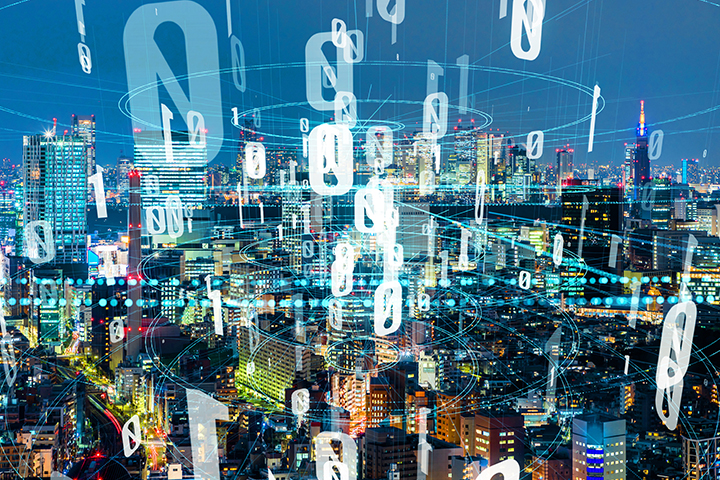Smart Space For Smart Workforce: Tech Giants Invest Big Bucks To Develop Better Workplace

26 Sep
2019
It is not just humans and gadgets that need to be smarter, office spaces must also be equally smarter for today’s tech-savvy world. After the smart homes and smartwatches, the world is falling head over heels in love with smart spaces.
In layman’s language, smart spaces are physical environments implemented with monitors and sensors that aid humans and integrated technologies to interact with each other. Moreover, one of the reasons that smart spaces came into the spotlight that these environments are said to improve personal as well as professional productivity, by simplifying complex processes and increase energy efficiency. Thus, tech giants such as Microsoft and Infosys are renovating their office spaces to make them smarter. According to Allied Market Research, the smart space market is anticipated to garner $86.52 billion by 2026, growing at a CAGR of 17.6% from 2019 to 2026.
Smart homes aka connected homes are popular examples of smart spaces. Just as smart homes are created to meet the needs of residents and make their life hassle-free, smart spaces will be highly unique and filled with a gamut of innovative technologies. However, there are several solutions that are more commonly used in environment. For instance, airports with facial recognition for security check-ins and self-service kiosks for self-service bag drops and hospitals that have trackers for computer carts and interactive surfaces such as conference room walls so staff can immediately order prescriptions or remotely monitor patients.
Although smart space concept is not new for the world as Internet of Things has been doing its fair share to advance the industry, with the deployment of 5G infrastructure, several companies started to roll out smart space solutions. Recently, Infosys announced its collaboration with Microsoft and Johnson Controls to deploy smart spaces solutions that drive the convergence of physical and digital infrastructure. These solutions would use the innovative technologies to improve the entire lifecycle of building construction as well as user experience of those who work in the building. In addition, as an integrator of smart space solutions, the partnership would develop an ecosystem that promotes scale and speed to change the workspace by making the building safer, more efficient, and sustainable.
In another news, Ericsson announced that it would build a 5G smart factory in the U.S. located in Lewisville, Texas. The factory received a colossal investment from the Swedish telecom of around $100 million and the factory is expected to open in 2020. Moreover, the 5G smart factory would produce advanced antenna system to enable rapid 5G deployment. Prior to this, Ericsson announced that the automated smart factory in China is now operational, which develops 4G and 5G radio technology products that support communication service providers in the Chinese market.
Soon smart spaces would be a way of portraying a smart workforce. The tech giants are quite instrumental in the introduction of innovative workplaces that promote creativity and open collaboration. As millennials and their young peers now dominate the business landscape, it is no secret that they prefer those workplaces that encourage productivity and stimulate creativity.
Reference:
1. aninews.inÂ
2. rcrwireless.com
Â
Â

Rosy Behera
Author's Bio- Rosy Behera holds a bachelor’s degree in Electrical and Electronics Engineering and now she is a content writer by profession. She loves to portray her thoughts and ideas with a nice command of words. Grabbing an audience with her creative write-ups is one of her biggest assets so far. Apart from writing, she is a certified “Odisi” dancer and has done Gardharva in Drawing, Painting, and Arts. She always explores new things through travel and is a big foodie.
Novel Technologies and Collaboration with Traditional Fintech Companies Triggers Paradigm Shift In Digital Lending Ecosystem
Avenue: Entire Library membership of Allied Market Research Reports at your disposal
- Avenue is an innovative subscription-based online report database.
- Avail an online access to the entire library of syndicated reports on more than 2,000 niche industries and company profiles on more than 12,000 firms across 11 domains.
- A cost-effective model tailored for entrepreneurs, investors, and students & researchers at universities.
- Request customizations, suggest new reports, and avail analyst support as per your requirements.
- Get an access to the library of reports at any time from any device and anywhere.
Related Post
-
How are Submarine Cables Transforming Global Connectivity with Enhanced User Experience?
-
Endoscopy Procedures: Transformations in Techniques and Applications
-
AI-Powered Video Analytics: How the Product Actually Works for enterprises
-
Painting Robots: Transforming Precision Coating and Creative Applications
-
Innovations in Pharmacovigilance Systems Advancing Patient Safety
-
Understanding Edge Security: Keeping Data Safe Near the Source
-
Exploring the Use and Advancements of 3D Laser Scanners in Professional Applications
-
Reinforcing Industrial Controls with Smarter Tools and Training








